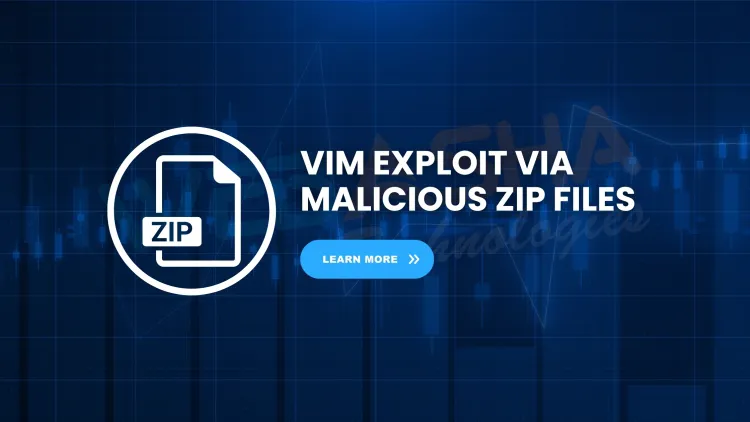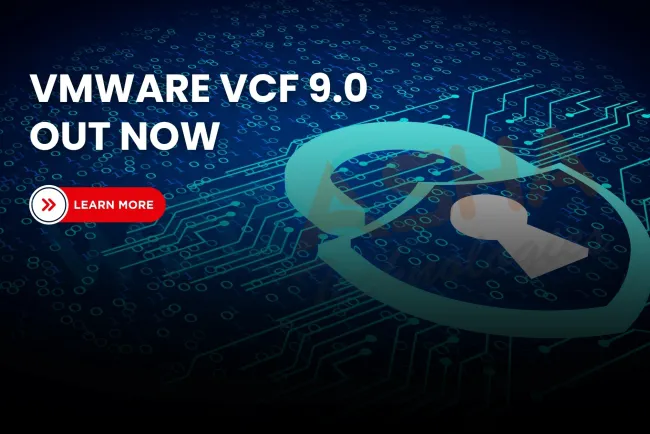What is CVE-2025-53906 in Vim Text Editor and how can users protect against the zip.vim path traversal vulnerability?
CVE-2025-53906 is a medium-severity path traversal vulnerability affecting Vim’s zip.vim plugin, allowing attackers to overwrite arbitrary files using specially crafted zip archives. This flaw requires local user interaction and affects all Vim versions below 9.1.1551. By exploiting improperly sanitized file paths, attackers can compromise sensitive files and potentially execute arbitrary commands. Vim has released version 9.1.1551 with the necessary patch, and users are strongly advised to update immediately. System administrators should also restrict zip file editing permissions and monitor for suspicious file system activity to minimize exposure.

Table of Contents
- What Is the Vim CVE-2025-53906 Vulnerability?
- How the Vulnerability Works
- Risk Factors and Impact Table
- How Serious Is This Vulnerability?
- Exploitation Steps (Simplified)
- Patching Details
- Recommended Actions for Users and Organization
- Why This Vulnerability Matters for Developers
- Conclusion
- Frequently Asked Questions (FAQs)
In July 2025, a critical security vulnerability was reported in the widely used Vim command-line text editor. Known as CVE-2025-53906, this flaw affects Vim’s zip.vim plugin, exposing millions of users worldwide to serious security risks through path traversal attacks.
What Is the Vim CVE-2025-53906 Vulnerability?
CVE-2025-53906 is a path traversal vulnerability found in the zip.vim plugin, allowing attackers to overwrite sensitive system files. The attack works when a user opens a specially crafted zip archive using Vim.
-
Affected Versions: All Vim versions prior to 9.1.1551
-
Severity Score: CVSS 3.1 score of 4.1 (Medium)
-
Type of Vulnerability: Path Traversal (CWE-22)
How the Vulnerability Works
When a user opens a malicious zip archive with Vim, the zip.vim plugin does not correctly validate the file paths inside the archive. This allows attackers to craft files that overwrite data outside the extraction directory by using directory traversal sequences like ../.
Real-World Scenario:
-
An attacker sends a developer a zip file claiming it contains project files.
-
The developer opens the archive using Vim.
-
Malicious file paths inside the archive overwrite sensitive files such as
.bashrcor configuration files. -
Depending on system permissions, attackers may even achieve arbitrary command execution.
Risk Factors and Impact Table
| Risk Factors | Details |
|---|---|
| Affected Products | Vim (all versions below 9.1.1551) |
| Impact | Path traversal, file overwrite, sensitive data compromise |
| Exploit Prerequisites | Local access, high complexity, no privileges, user interaction |
| CVSS 3.1 Score | 4.1 (Medium) |
| User Interaction | Required (editing malicious archive in Vim) |
How Serious Is This Vulnerability?
While the CVSS score classifies it as Medium, the implications can be severe in real-world environments:
-
Arbitrary File Overwrite: Attackers can modify or delete critical system files.
-
Sensitive Data Compromise: Security configurations, tokens, and scripts can be replaced.
-
Potential Command Execution: If critical system files like cron jobs or service scripts are overwritten.
Exploitation Steps (Simplified)
-
Create a Malicious Zip Archive: Crafted with directory traversal payloads.
-
Send Archive to Target: Through phishing or other local delivery methods.
-
Victim Opens Archive Using Vim: Inadvertently triggering the vulnerability.
-
Files Overwritten: Malicious files overwrite sensitive system files.
Patching Details
Patch Release: Vim 9.1.1551
What’s Fixed?
-
The
zip.vimplugin now properly sanitizes file paths. -
Prevents directory traversal sequences in zip archive handling.
Where to Get the Patch?
-
Official Vim Repository: GitHub Commit (Example URL)
-
Available via most Linux package managers as part of regular updates.
Recommended Actions for Users and Organizations
| Action | Why It Matters |
|---|---|
| Update Vim to 9.1.1551+ | Mitigates the vulnerability completely |
| Restrict Zip Handling | Limit user permissions to edit zip files unless necessary |
| Monitor File System | Watch for unusual changes in sensitive directories |
| Educate Teams | Make developers and admins aware of this vulnerability |
| Backup Important Files | Ensures recoverability if files are overwritten accidentally |
Why This Vulnerability Matters for Developers
Vim is integral to many developer workflows, especially in Linux environments. Path traversal vulnerabilities in common tools like Vim demonstrate:
-
The need for constant vigilance in secure development environments.
-
The importance of up-to-date software and patch management.
-
The reality that user interaction-based attacks still pose serious risks.
Conclusion
CVE-2025-53906 is a reminder that even trusted tools like Vim can harbor hidden vulnerabilities. While it requires direct user interaction and has a moderate CVSS score, the real-world impact could be significant if left unpatched.
If you use Vim regularly, especially with the zip.vim plugin, update to version 9.1.1551 or later immediately and review your organization's file handling policies.
FAQs
What is CVE-2025-53906 in Vim Text Editor?
CVE-2025-53906 is a vulnerability in Vim's zip.vim plugin that allows attackers to overwrite arbitrary files via path traversal using malicious zip archives.
How severe is the Vim zip.vim vulnerability?
It has a CVSS score of 4.1, categorized as a medium-severity vulnerability requiring local access and user interaction.
Which Vim versions are affected by CVE-2025-53906?
All Vim versions prior to 9.1.1551 are affected by this vulnerability.
What causes CVE-2025-53906 in Vim?
The vulnerability is caused by improper path validation when handling zip archives in Vim’s zip.vim plugin.
How can attackers exploit CVE-2025-53906?
Attackers can craft zip archives with special file paths that, when opened in Vim, overwrite files outside the intended directory.
Does exploiting CVE-2025-53906 require user interaction?
Yes, the victim must open the malicious zip archive using Vim for the attack to work.
What is a path traversal vulnerability?
A path traversal vulnerability allows attackers to access or overwrite files outside a designated directory by manipulating file paths.
What is CWE-22?
CWE-22 refers to Improper Limitation of a Pathname to a Restricted Directory, the root issue behind this vulnerability.
How can I check if my Vim installation is vulnerable?
You can check your Vim version using the vim --version command and verify if it’s below 9.1.1551.
How do I update Vim to the latest patched version?
Update Vim using your Linux distribution's package manager or download the latest version from the official Vim repository.
Where can I find the official patch for CVE-2025-53906?
The patch is available through Vim’s official GitHub repository and as part of version 9.1.1551 or newer.
Can this vulnerability lead to remote code execution?
While primarily a local file overwrite vulnerability, it could potentially lead to command execution depending on overwritten files.
Does this affect all operating systems using Vim?
Yes, any system running vulnerable Vim versions can be affected, including Linux, Windows, and macOS.
Is there any way to mitigate CVE-2025-53906 without updating Vim?
You can mitigate risks by avoiding editing unknown zip archives with Vim and restricting permissions, but updating is strongly recommended.
What is the zip.vim plugin?
The zip.vim plugin in Vim allows users to browse and edit files inside zip archives directly within the editor.
Who discovered CVE-2025-53906?
The vulnerability was disclosed and documented by security researchers and published officially on July 15, 2025.
Why is Vim still popular despite vulnerabilities?
Vim remains popular due to its lightweight, flexible, and powerful command-line editing capabilities, widely used in development environments.
What is the difference between CVSS score and CWE classification?
CVSS measures vulnerability severity, while CWE classifies the type or category of the vulnerability.
Can this vulnerability affect automated CI/CD pipelines?
Yes, if pipelines use Vim scripts or plugins that handle zip archives, they could inadvertently trigger the vulnerability.
How common are vulnerabilities in command line tools like Vim?
While less frequent than in browsers or web apps, command-line tools occasionally have vulnerabilities due to their complexity and extensive use.
Should organizations prioritize patching Vim?
Yes, especially if Vim is widely used in production environments or developer machines handling sensitive files.
How do attackers create malicious zip archives?
By embedding specially crafted file paths with directory traversal sequences in zip files.
What should users do if they suspect exploitation?
Stop using the vulnerable Vim version, update immediately, and check system logs for unauthorized file changes.
How long has Vim been in development?
Vim has been under active development since 1991 and is maintained as open-source software.
What role does the zip.vim plugin play in Vim?
It allows viewing and editing files directly from compressed zip archives within the editor.
Can antivirus software detect exploitation attempts?
Some endpoint protection tools may detect suspicious zip archive activity, but it is not guaranteed.
Is this vulnerability related to previous Vim security issues?
It’s a distinct vulnerability but part of a broader class of archive-handling security issues that have affected similar tools.
How does CVE-2025-53906 differ from remote exploits?
It requires local access and user interaction, unlike remote exploits that can target users without their direct involvement.
How does user education help mitigate such risks?
Educating users about the risks of opening unknown zip files using command-line tools can prevent accidental exploitation.
What’s the best long-term solution for organizations?
Keeping all development tools updated, applying security patches promptly, and enforcing strict file-handling policies.














![Top 10 Ethical Hackers in the World [2025]](https://www.webasha.com/blog/uploads/images/202408/image_100x75_66c2f983c207b.webp)








